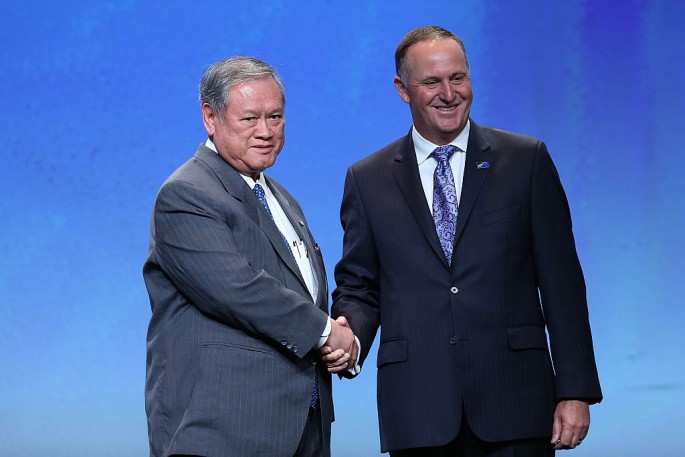In a statement released on Thursday, Feb. 4, the Chinese Ministry of Commerce (MOFCOM) downplayed the impacts of the Trans-Pacific Partnership (TPP), a trade pact that aims to counter China's influence in the region, the Global Times reported.
"China has taken notice of the signing of the Trans-Pacific Partnership. . . . China is studying and evaluating it," said the ministry, adding that the country expects "the various free trade arrangements in the Asia-Pacific region will complement each other and jointly contribute to this region's trade, investment, and economic growth."
The TPP, signed on Thursday in Auckland, New Zealand, includes the United States, Mexico, Australia, New Zealand, Brunei, Peru, Canada, Singapore, Chile, Vietnam, Malaysia and Japan.
The United States is open about the TPP's true goals, which is to counter China's rising influence in the Asia-Pacific region.
"TPP allows America--and not countries like China--to write the rules of the road in the 21st century," said U.S. President Barack Obama after the signing of the pact.
Meanwhile, China has maintained an open attitude toward the development of new trade blocs in the region.
"China will actively participate in and push for regional free trade arrangements that feature a high-degree of openness and inclusiveness," said MOFCOM.
This attitude, however, has subtly changed over the course of years. In 2013, China was mulling the possibility of joining the trade pact. Recent statements by MOFCOM, however, make no mention of such plans.
"Although the deal may create pressure on China's international trade, a comprehensive assessment is needed for China to evaluate possible options favorable to the country," said Bai Ming, research fellow from the Chinese Academy of International Trade and Economic Cooperation, in an interview with the Global Times.
What the government is focusing now is highlighting progress in the region by forming more regional free trade agreements in the area.
Among these FTAs is the Regional Comprehensive Economic Partnership (RCEP), which involves ASEAN countries and other regional economies.
China is currently involved in 14 free trade agreements with 22 countries, including Australia, New Zealand, South Korea, Switzerland and Chile.



























